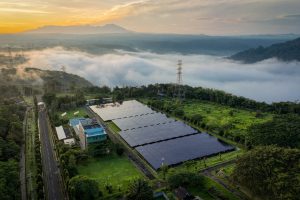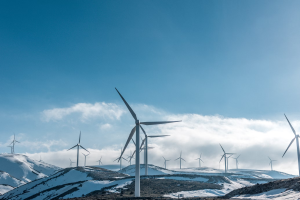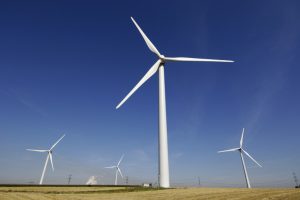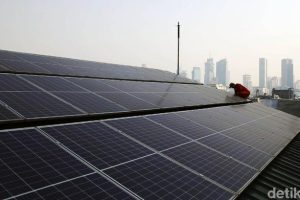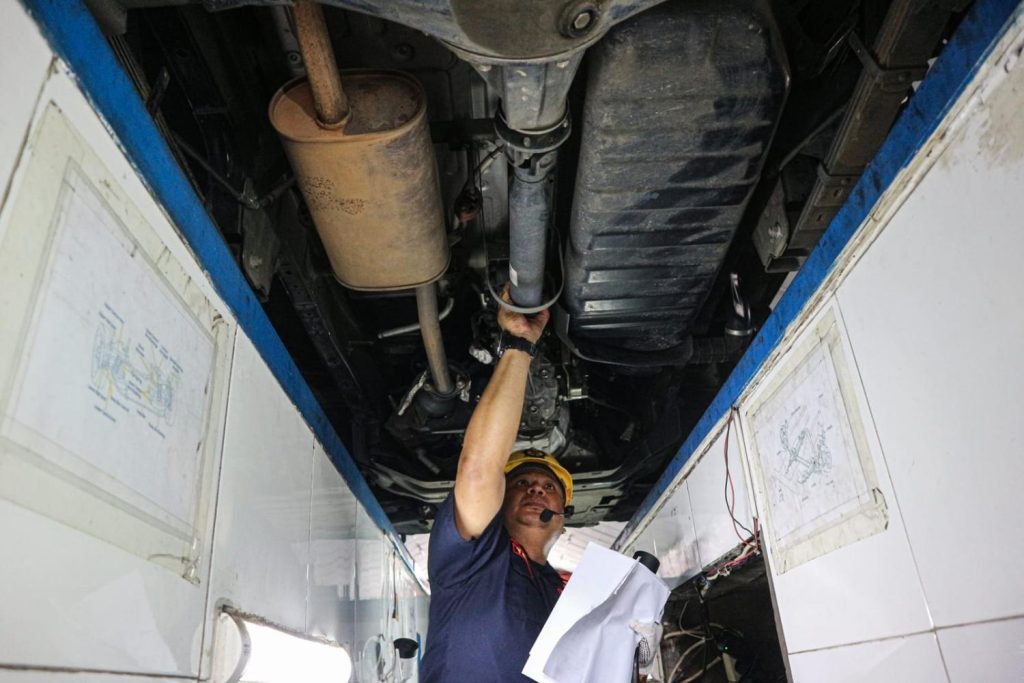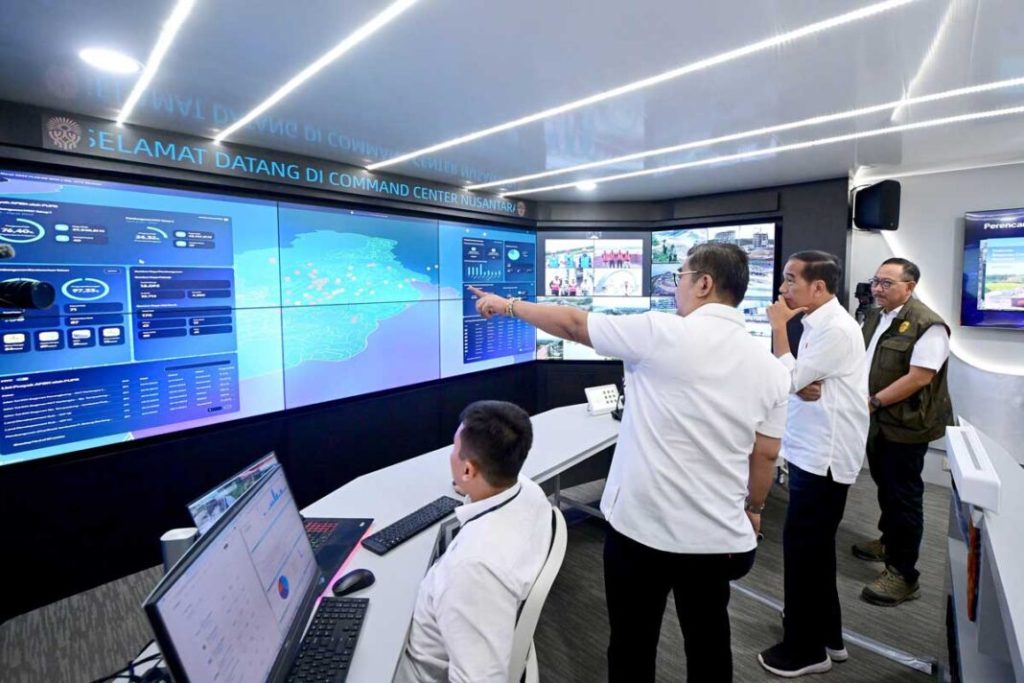Electricity generation in a country has many facets that are intertwined, including but not limited to economics, social, and politics. Regardless of what sources are used in the electricity generation, the economics part will have impacts on the social part and many others. One key area that is usually considered while developing a power plant is the environment. The elements of the environment considered include but not limited to the affected air, water, and soil quality due to the power plant construction and operation. Other concerns may include natural resources supply in the surrounding are or related to the aesthetics. This article, however, aims to focus more on the positive and negative environmental impacts attributed to the electricity generation. It will present the environmental impacts from using both renewable and non-renewable sources in general, and in particular, Indonesia. A detailed discussion on the policy aspects of renewable energy (RE) in Indonesia can be read on this opinion “Indonesia Renewable Energy Development: How far have we“.
Electricity is needed to run electrical appliances and many things in our daily lives. This electricity could be generated from both renewable and non-renewable sources. The RE sources used are hydropower, geothermal, solar, wind, and biomass while the non-renewable sources are coal, natural gas, and oil (Yusgiantoro & Yusgiantoro, 2018). At the moment, Indonesia is striving to increase the renewable portion of the national energy mix. Consequently, there are many projects to build power plants based on renewable energy in Indonesia. However, it is important to be noted that in the near future, the coal-fired power plants would still be heavily relied on.
Electricity Generation from Renewable Energy
Electricity generation from RE sources comes with its advantages and disadvantages that affect the environment. Environmental impacts of producing energy using renewable energy are usually attributed to the production process itself. Generally, the advantage of using RE is the less emission of greenhouse gases (GHGs) to the environment compared to the non-renewable energy. While for the negative impacts, they are usually related to land use change issues and the pollution occurred during the manufacturing of RE power plant parts.
In Indonesia, it could be seen that hydropower dominates Indonesia electricity generation in the RE sector, at 19,370 Gwh in 2016. Meanwhile, the generation using geothermal energy produces 10,656 Gwh electricity (Figure 1). The share of RE power generation were around 64% of hydropower and around 35% of geothermal (IEA (International Energy Agency), 2018). Based on Figure 1, it can also be inferred that solar PV, wind, and many other RE sources have not been fully optimized.
On the contrary, despite its benefits, the power generation utilizing wind, geothermal, hydropower, and biomass still affect the environment. For example, the photovoltaic (PV) solar cell for solar power plant is produced from certain minerals that can only be obtained through mining. To date, mining activity definitely creates detrimental impacts to the environment.
Additionally, a huge land needed to build new RE power plants is inevitable. At some points, there will be a conflicting interest between the power plant developers and the local community regarding this land issue. These conflicts could be in the form of land use change, such as transforming the agricultural land into power plant area or the huge burden from the power plant to the soil that may change the formation of soil completely. The RE sources, such as wind, hydropower, and geothermal fit into these scenarios. Therefore, increasing demand for this particular source of energy would affect the landscape, either in the short-term or long term. Besides, water use for the cooling system of certain renewable technology, such as geothermal plant, is an important factor that can not be neglected. In some areas where water resource is scarce, building a geothermal plant might be difficult. The developers might face resistance from the local communities as the power plant may disturb their lives, in terms of the noise pollution, landscape scenery (aesthetically), in addition to the water issues (Holma, et al., 2018).

Figure 1. Electricity generation from renewables by source in Indonesia (1990-2016) (IEA (International Energy Agency), 2018)
Nevertheless, the size of the impacts would depend on the scale of the projects. The important thing to be noted is the RE growth implies the increase of the feedstock or raw materials. This may lead to land use change which could be more damaging to the environment than using fossil fuel to generate the electricity. Hence, a cost-benefit analysis and comprehensive study is needed to better understand the comparison between using RE and non-RE to generate electricity and to provide insights for the policy maker.
Electricity Generation from Non-Renewable Energy
In 2017, coal was still the main source (57%) to generate electricity in Indonesia (Purnomo Yusgiantoro Center, 2018). Indonesia’s coal resources and production are mainly distributed over only four provinces out of 34: East Kalimantan, South Sumatera, South Kalimantan, and Central Kalimantan (Institute for Essential Services Reform (IESR), 2019).
Coal is still difficult to be replaced due to its cost advantage. Despite its cheaper price, generating electricity using coal also damages the environment, of which could eventually cost human lives. Particularly, the environmental impacts of coal industry include but not limited to air pollution, waste management, and land use issues.
First, the air pollution that comes from the coal combustion. The combustion process would release many hazardous substances for the environment, such as GHGs and particulate matter. The coal combustion during the electricity generation releases carbon dioxide (CO2), sulfur dioxide, nitrous oxide, particulate matter, and many others. Among these gases, CO2 and NOx are GHGs that can contribute to the global climate change in the world. Indonesia’s electricity demand is estimated to increase by 8 percent annually between 2015 and 2024, with ongoing future growth. Hence, the emission of air pollutants from the power sector is projected to increase considerably (Takahashi, 2015). Furthermore, SO2 as well as CO2, have the potential to cause acid rain. Lastly, the particulate matter is a toxic substance that could cause human respiratory problems (Energy Information Administration (EIA), 2018). In Indonesia, it is projected that each additional 1 GW of the coal power plant would cost around 600 lives annually (Boren, 2015).

Figure 2. Primary Energy Supply Mix in Power Generation 2017 (Processed from Purnomo Yusgiantoro Center, 2018)
Second, to produce coal, it necessitates the mining activities that are detrimental to the environment. These activities could create sinkhole, erosion, and surface water pollution. It also produces sludge resulting from the scrubber used to reduce the SOx emitted by coal combustion. All of these create more burdens to the environment. It could destroy the agricultural land used for mining as well as the landscape.
In comparison, natural gas which can be used to generate electricity in a variety of ways (steam generation unit, centralized gas turbines, microturbines, and many more (natgas, 2013)), is more environmental-friendly. Furthermore, generating electricity using natural gas would not only generate fewer air pollutants but also less sludge.
Without taking the economics aspect into consideration, renewable energy is still preferred to generate electricity as it is safer for the environment considering the GHGs emitted. Nevertheless, there are no comprehensive assessments yet studying all the environmental impacts associated with renewable energy production. Therefore, a comprehensive study that quantifies these environmental impacts is still needed to conclude that renewable energy is better than conventional energy in all aspects. In particular, the human health, erosion, air pollution, and many other impacts to the environment and society which are external costs, need to be considered when generating electricity using fossil-fuel.
On the flip side, renewable technology keeps growing and studied over time. It is estimated that electricity from solar PV would be cheaper than coal by 2030, whereas wind will be as cheap as coal by 2050 (Institute for Essential Services Reform (IESR), 2019).
To tackle the adverse environmental impacts, the followings are the summary and inferred suggestions:
– Despite its benefits to the environment, I think it is highly unlikely to convert completely from fossil fuel to the renewable energy sources.
– Should we quantify all of these external costs, the overall cost might be higher for the electricity generation utilizing coal instead of renewable energy sources.
– Research and development to create better technologies for reducing the environmental impacts from RE power generation needs to be accelerated. Use of advance pollutants reduction technologies needs to be enforced to reduce the environmental impact from the conventional (fossil fuel) power plants.
– In Indonesia, the electricity generation utilizing wind power is still underexplored and needs more attention.
– Given proper waste management, the resulting organic waste from human and agricultural activities could be utilized to generate electricity.
– To utilize the flare gas that has not been exploited yet as the additional fuel for electricity generation. Also, to reducing waste, producing electricity using gas also emits less pollutant to the environment.
Bibliography
Boren, Z. D. (2015, August 13). Indonesia air pollution: Thousands of lives at risk from new coal plants. Retrieved from https://unearthed.greenpeace.org/2015/08/13/indonesia-air-pollution-tens-of-thousands-of-lives-at-risk-from-new-coal-plants/
Energy Information Administration (EIA). (2018, December 19). Energy Explained. Retrieved from https://www.eia.gov/energyexplained/index.php
Holma, A., Leskinen, P., Myllyviita, T., Manninen, K., Sokka, L., Sinkko, T., & Pasanen, K. (2018). Environmental impacts and risks of the national renewable energy targets – A review and a qualitative case study from Finland. Renewable and Sustainable Energy Reviews, 82, 1433-1441. doi:https://doi.org/10.1016/j.rser.2017.05.146
IEA (International Energy Agency). (2018). Retrieved from IEA Statistics: https://www.iea.org/statistics/?country=INDONESIA&year=2016&category=Renewables&indicator=ShareRenewGen&mode=chart&dataTable=RENEWABLES
Institute for Essential Services Reform (IESR). (2019). Indonesia’s Coal Dynamics: Toward A Just Energy Transition. Jakarta: Institute for Essential Services Reform (IESR).
natgas. (2013, September 20). NaturalGas.org. Retrieved from http://naturalgas.org/overview/uses-electrical/
Purnomo Yusgiantoro Center. (2018). PYC Indonesia’s Renewable Energy Booklet 2018. Jakarta: Purnomo Yusgiantoro Center.
PWC . (2018). Mining in Indonesia: Investment and Taxation Guide. Jakarta: PricewaterhouseCoopers (PWC).
Takahashi, M. (2015, September 7). The Indonesia Carbon Capture Storage (CCS) Capacity Building Program: CCS for Coal-fired Power Plants in Indonesia. Washington D.C.: International Bank for Reconstruction and Development/World Bank. Retrieved from http://documents.worldbank.org/curated/en/563781468284373788/pdf/FINAL-OK2-Jun-2415Cov-reduced-with-WB-cover.pdf
Yusgiantoro, P., & Yusgiantoro, L. (2018). Ekonomi Energi: Teori dan Praktik. Jakarta: Yayasan Purnomo Yusgiantoro.
*This opinion piece is the author(s) own and does not necessarily represent opinions of the Purnomo Yusgiantoro Center (PYC)
